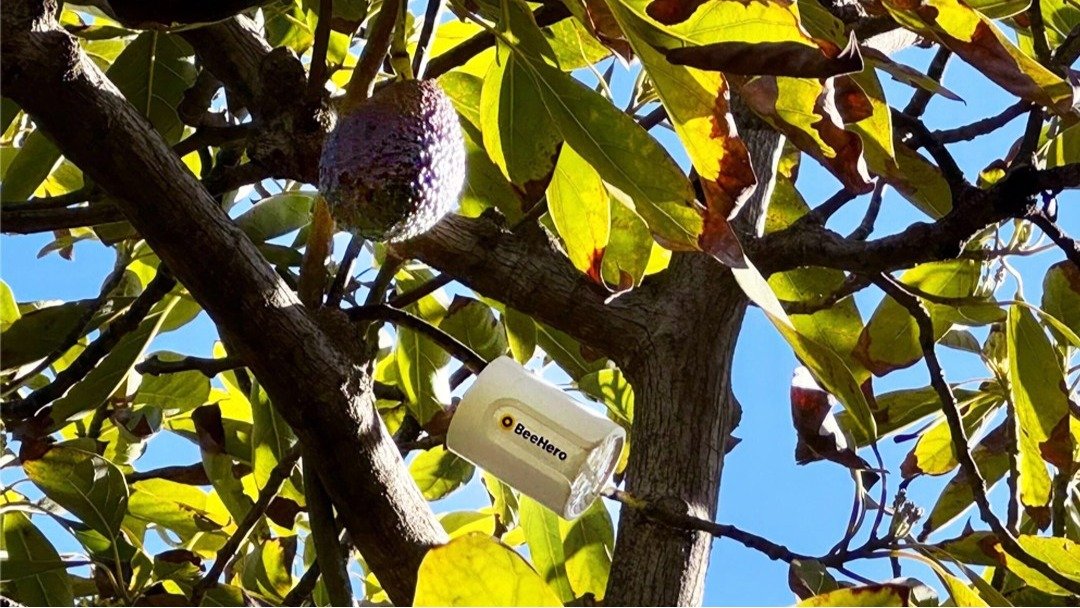As pollinator populations continue to decline at an alarming rate, BeeHero—a company known for its work in data-driven pollination—has launched a new global initiative aimed at monitoring and understanding bee health on an unprecedented scale. Called The Global Million Hives Network, the project intends to expand real-time hive monitoring to one million beehives by 2030, with a particular focus on regions most vulnerable to pollinator-related disruptions in food production.
The initiative comes at a time when the importance of bees to agriculture is more urgent than ever. Pollinators, bees especially, are essential to roughly 75 percent of food crops. However, their populations are facing a crisis. In the United States alone, beekeepers have reported mortality rates of over 60 percent in commercial hives over the last season. Similar patterns are being reported in several countries, raising concerns not just about food security, but also about the long-term viability of many ecosystems tied to pollination.
BeeHero’s Global Monitoring Network – Effort to Understand and Monitor Bee Populations
BeeHero plans to use its existing digital infrastructure to scale up monitoring from over 300,000 hives to one million over the next five years. The company, which operates across five continents, uses a network of smart sensors placed inside and around beehives. These sensors collect data on hive conditions, bee behavior, and surrounding environmental factors. With this expansion, BeeHero expects to build the largest continuous dataset ever created on bee health and behavior.
The million-hive network will pay particular attention to countries and regions where bee populations are most at risk or where pollination plays a vital role in sustaining agricultural output. This large-scale observation will allow researchers to track hive conditions over time, detect patterns in colony decline, and monitor the spread of common threats such as parasites and disease. The initiative is designed to gather consistent, real-time data on a massive scale, offering insights that were previously difficult to obtain due to the fragmented nature of beekeeping and pollinator research efforts. This extended reach is expected to offer a broader and more nuanced view of hive behavior, regional disease patterns, environmental stressors, and pollination dynamics across various crop systems and climates.
Expanding Data Collection in High-Risk Regions
One of the central goals of the project is to deepen monitoring efforts in areas that are particularly vulnerable to bee losses or are agriculturally vital. Through the use of in-hive sensors and digital tracking tools, the network will collect continuous data from hives around the world, focusing especially on regions where pollination gaps could severely affect food production.
This expanded infrastructure will not only capture the state of pollinator health in real-time but also track changes across seasons and climates. Data points may include information such as hive temperature, humidity, foraging activity, and the presence of pests like mites. Over time, this will help create a clearer understanding of what drives colony success or collapse, and how these trends differ geographically.
From Data to Action: Informing Policies and Research
Another key element of the initiative lies in how the collected data will be used. By dramatically increasing the amount of information gathered—from the current 25 million daily data points to a projected 100 million—the project aims to build the world’s most detailed database of pollinator behavior and health. These insights are expected to support not only researchers and scientists but also governmental bodies, environmental organizations, and agricultural policymakers.
Patterns observed through this network could help identify early signs of disease outbreaks or the effects of environmental stressors on pollination. Over time, such knowledge could be used to guide the development of new pollination strategies, improve forecasting models for crop yields, and support early interventions by beekeepers or growers. It could also support long-term biodiversity and agricultural planning efforts.
Encouraging Collaboration and Awareness
The third major aspect of the network’s mission is focused on outreach and education. Building partnerships with agricultural ministries, environmental NGOs, universities, and advocacy groups, the initiative seeks to increase public and institutional awareness of pollinator challenges. This includes efforts to promote more sustainable farming practices and influence policy to better support biodiversity and pollinator-friendly land use.
By fostering a culture of data sharing and collaborative learning, the initiative hopes to break down the silos that often isolate beekeepers, farmers, researchers, and regulatory bodies. The hope is that shared access to real-time data and scientific research will encourage more proactive measures in pollinator conservation across borders.
Facing the Bigger Picture to 2030
Behind this global effort is the recognition that the health of pollinators is closely intertwined with food security, rural livelihoods, and ecosystem resilience. While technology provides a way to better understand the problem, the people behind the hives—beekeepers, farmers, scientists, and policymakers—will play an equally crucial role in shaping the outcomes.
Those involved in the initiative have acknowledged that while data can guide decisions, meaningful change will require cooperation across sectors and countries. As pressures on food systems grow due to climate change, land-use shifts, and intensive agricultural practices, there is a growing sense that pollinator health can no longer be seen as a peripheral concern. It is becoming central to the broader conversation about how food is grown and how natural systems are sustained.
The Global Million Hives Network is being launched with a long-term view, aiming to deliver impact not just in terms of science but also in how pollinator health is approached globally. By 2030, if the one million hive target is met and the accompanying database proves useful, it could serve as a vital tool in managing pollinator populations and shaping future agricultural strategies.
In a time when ecological systems are increasingly under pressure, efforts that bring together technology, policy, and community involvement could make a significant difference. Whether this initiative will meet its ambitious targets remains to be seen, but its underlying message is clear: addressing pollinator decline requires both urgency and unity.


